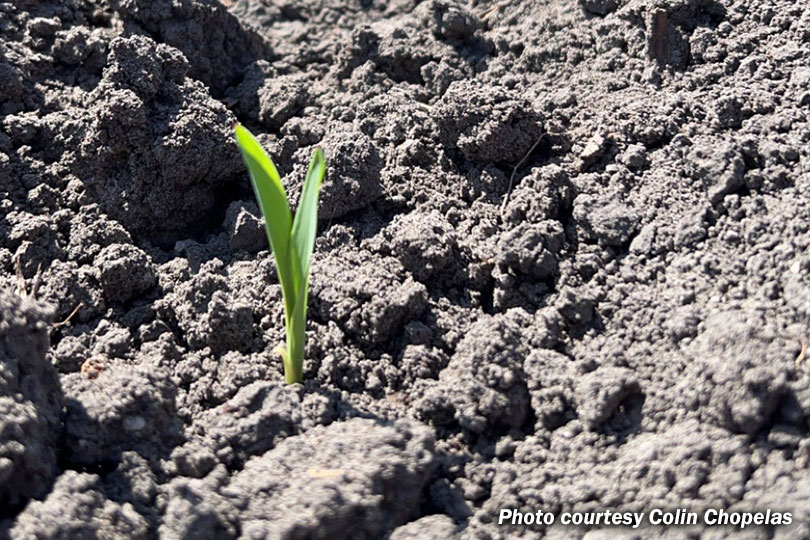By Julie Tomascik
Editor
Shoots of green are emerging from the soil in the Rio Grande Valley and South Texas. For farmers Bryce Wilde and Colin Chopelas, the 2022 growing season is well underway.
Weather conditions haven’t been ideal for Chopelas who is facing drier conditions in San Patricio County.
“We had to plant this corn deep, and we adjusted our populations for potential continued dry weather going forward,” he said. “We’re just trying to make the best we can of the fields that have moisture and hoping we pick up precipitation on the fields that are a little dry yet.”
They started planting corn around mid-February, a little later this year because they were hoping for some rain.
Chopelas said he’s received less than an inch of rain this year. But the Coastal Bend and further south into Willacy County, where Wilde farms, have seen more moisture.
“We’re real fortunate to have a lot of good moisture this year. We very rarely get a substantial amount of rain in January to give us planting moisture, but this year we did,” Wilde said. “Here on the coastal counties, we’re in better shape.”
Wilde grows both dryland and irrigated crops. He’s thankful for the early rainfall to help ease the need for irrigation.
“When you look at it, from an irrigation perspective, the outlook kind of looks bleak because of limited amount of water we have in the whole system,” Wilde said. “So, that was a big, big welcome with those early rains because we didn’t have to pre-water.”
Drought isn’t the only concern farmers have this year. High input costs, including fertilizer and fuel, combined with global agricultural issues have farmers facing uncertain conditions.
“This new environment—we’re learning every day when it comes to marketing,” Wilde said in an interview with the Texas Farm Bureau Radio Network. “It seems like everything is different this year.”
But they’re hopeful for continued rain and higher commodity prices to get through the year.
“It’s very concerning. We tried as hard as we could to book chemicals and fertilizer early on. It’s never enough,” Wilde said. “But we’re still excited and hopeful about growing a crop this year.”

